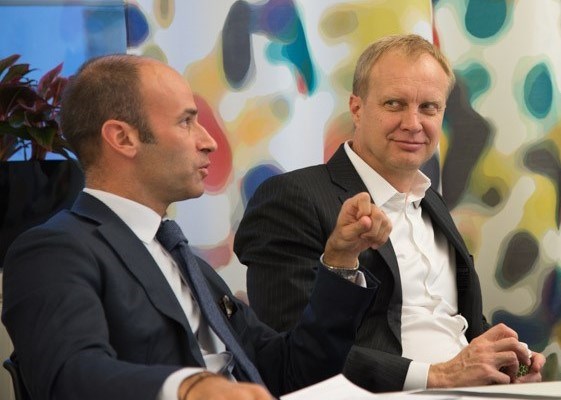The evolving private debt market
Dec. 07, 2014
On November 6th, SIFR and Leimdörfer Real Estate Capital held a roundtable discussion on the subject of private debt. Despite many questions and opportunities, private debt is an asset class that is quickly growing rousing the interest of both investment managers and investors

We gathered 20 top participants from across the financial industry to discuss the future of private debt markets. – There is a possibility of a new, important and potentially large market for private debt. In fact, private debt might be at the same stage that the private equity market was 20 years ago, commented Peter Leimdörfer. A summary of this discussion can be found here:
– There is a possibility of a new important and rather big market. Private debt might be at the same stage that the private equity market was 20 years ago, said Peter Leimdörfer.
On November 6, SIFR and Leimdörfer Real Estate Capital held a roundtable discussion on the subject of Private Debt, an asset class that is quickly growing but new to many and surrounded by many questions. 20 participants from different parts of the industry came together for breakfast and a one hour session on the topic.
– From an investor perspective, private debt can be interesting as a low volatility alternative with low correlation to most other asset classes, said Daniel Sachs.
Presenting at the event were Magnus Dahlquist, professor at Stockholm School of Economics, Peter Leimdörfer from Leimdörfer, Daniel Sachs from Proventus and Helmut Muelhofer from Allianz. Kim Hansson from SIFR held an introduction and moderated the event. Discussions were particularly lively on the topics of regulatory pros and cons, riskreward characteristics and current market sentiment towards private debt. The maps of the financial markets in Europe have been re-drawn since the financial crisis and the interest for alternative investments are growing. As banks are more and more restrictive in their lending towards small and medium sized companies, non-bank actors are taking an increasingly more active role in corporate funding. This creates a need for an adapted regulatory environment and more targeted research on this new asset class. Magnus Dahlquist gave a short introduction to illustrate where the research on private debt is at the moment. He argued that traditional portfolio composition by asset class is not necessarily the most optimal from a risk perspective. Instead, risk factors rather than asset classes should be considered to get a more complete picture of overall portfolio exposure. Peter Leimdörfer compared the current stage of the Swedish private debt market with the development of the private equity market 20 years ago. Just as with private equity then, there is a lack of competition in the area. The competition in the banking market is limited and subject to regulation. Furthermore, the two fund types, private equity and private debt share a strong alignment between manager and investors. As investors are seeking new alternatives in a zero rate environment, private debt is becoming increasingly interesting.
Magnus Eriksson, from the Fourth Swedish National Pension Fund (AP4), explained that they are by law not allowed to directly engage in direct lending but have to go through external managers which in effect makes private debt more problematic. The fact that big institutional investors are restricted from investing in private debt naturally has an impact on the potential growth of the market.
– We have been looking at this area for quite some time and there definitely exists an uncertainty regarding forthcoming regulations and where the regulative initiative lies at the moment, said Magnus Eriksson.
As the market is evolving rapidly, the regulatory framework will have to follow and changes in this area will most likely come. Helmut Muelhofer from Allianz pointed out that Italy recently amended laws affecting the private debt area to facilitate investment. Daniel Sachs from Proventus shared his first hand experiences of being a non-bank banker. He explained that Proventus actively searches for situations that are highly complex but at the same time has a low level of risk.
– Private debt is an interesting option for m any investors struggling to meet their commitments and looking for yield. A lot of institutions are however not yet prepared to invest and the knowledge about the market differs a lot between institutions. Even if the risk oftentimes is low and returns stable, this is not a liquid strategy and the lock-up is seen as problematic by some investors, said Daniel Sachs. When it comes to regulation, Daniel Sachs welcomed new initiatives but cautioned against regulating or taxing away one of the few sources of corporate funding that are growing. He argued that shadow banking is an important part of a future corporate funding solution and that regulation should focus on true systemic risks – on leverage and maturity transformation.
The German insurer Allianz started discussing private lending in 2010 after the financial crisis.
– Interest rates were going down and we were thinking about what we could do on the alternative investment side. Our goal was to find solutions that were relatively safe, liquid and at the same time generated stable returns, explained Helmut Muelhofer from Allianz.
Their first investment came about in 2011. Helmut Muelhofer described the experience of moving into a new asset class as challenging but at the same time necessary and rewarding.
-Moa Långbergs
